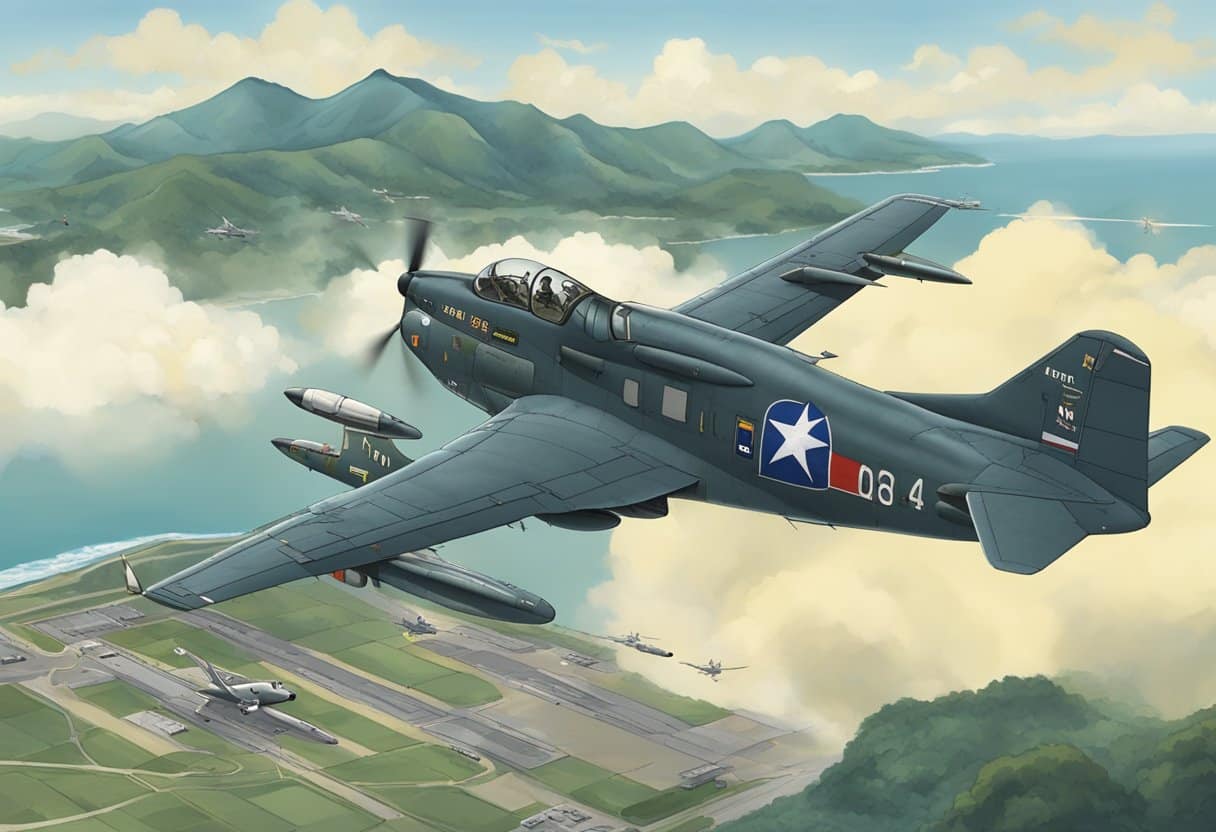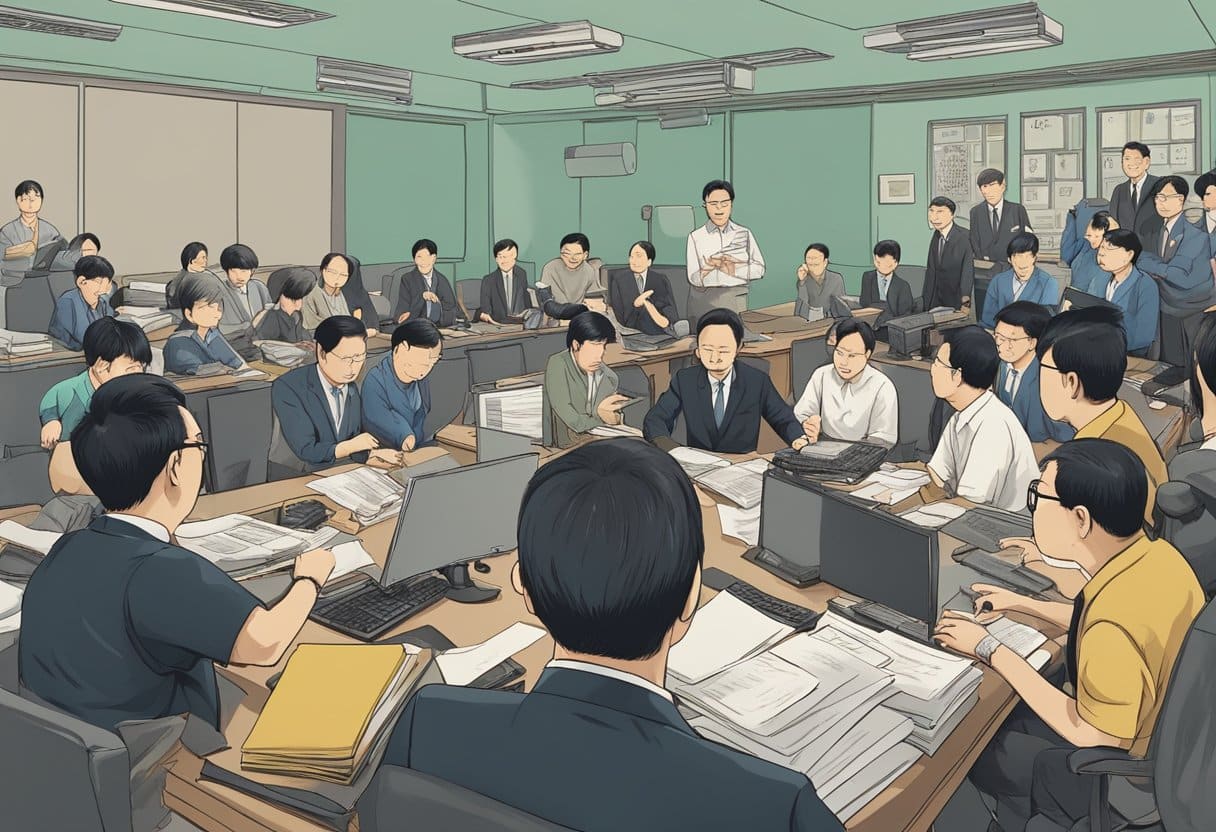Taiwan Scramble Patch: Navigating the Geopolitical Quilt
Recent years have seen significant interest in the Taiwan Scramble Patch, emblematic of the island’s air force and, by extension, its assertion of sovereignty. Originating from within the military, these patches capture Taiwanese identity through their unique designs, often incorporating symbols deeply significant to the region. These designs seem simple at first glance but contain a wealth of cultural and political symbolism directly related to Taiwan’s geopolitical situation and its historical context.

While these patches are rooted in military tradition, they have transcended their original context, influencing everything from civilian fashion to memes circulated on social media. This phenomenon is a testament to the patch’s power as a symbol of resistance and pride—transcending its initial purpose to become an emblem of wider societal sentiment. The circulation and reaction to these patches have highlighted issues of regulation and censorship, as well as the impact of international relations, especially regarding the delicate balance of power and diplomacy in East Asia.
Key Takeaways
- The Taiwan Scramble Patch is a symbol of Taiwan’s air force and national pride.
- Patches have a cultural significance that extends beyond the military into civil expression and commerce.
- The political and cultural narratives around the patch showcase its role as a symbol of resistance.
Historical Context of the Taiwan Scramble Patch

The Taiwan Scramble Patch reflects Taiwan’s military readiness and cultural symbols in the face of regional tensions, particularly military drills conducted by neighboring nations.
Roots of the Scramble Patch
The Scramble Patch originates from the practice within Taiwan’s Air Force of responding quickly to military incursions into their airspace. “Scramble” itself refers to the rapid takeoff of military aircraft to intercept intruders. These patches often integrate symbols of national pride and serve as a morale booster for the military personnel. The Formosan Black Bear, a symbol of Taiwan, is frequently featured as a declaration of resilience and sovereignty.
Evolution Over Time
Over time, the design and imagery of the scramble patch have evolved to include elements of political commentary and humor. This evolution reflects the island’s strive for a spirited defense identity within the context of increased military drills by neighboring powers. The patches are worn with pride by pilots and have become a collectible item among civilians, symbolizing unity and resistance.
Design and Symbolism of the Patch

The patch in question represents a vivid display of Taiwanese patriotism and a subtle act of political commentary. It’s a piece of fabric steeped in national pride and indicative of the tensions in the region.
Elements and Imagery
The central design of the patch features a fierce Formosan black bear gripping Taiwan’s flag, in a stance that is both protective and defiant. Above the bear, the word “Scramble!” is prominently displayed, which is a term that refers directly to the reactive defense maneuvers performed by military aircraft. This imagery portrays the readiness and rapid response of Taiwan’s air defense forces.
Formosan Black Bear Significance
The Formosan black bear is significant as it is endemic to Taiwan and holds a place of honor as a national symbol, representing the strength and bravery of its people. The presence of this bear on the patch underscores a sense of unity and an unwavering spirit of defense among the Taiwanese population in the face of external pressures.
Designed with symbolic overtones, this patch captures the essence of the island’s will to preserve its sovereignty and demonstrates a creative blend of nationalist sentiment and current geopolitical issues.
The Scramble Patch in Military Operations

The adoption of unique patches has been a long-standing tradition in military aviation, serving as a visual representation of a unit’s identity and camaraderie. One such emblem—the Scramble Patch—has recently gained prominence within the Taiwan Air Force during heightened military drills.
Air Force Drills and The Patch
During rigorous Air Force drills, the Scramble Patch has become a symbol of Taiwan’s readiness to defend its airspace. The patch, often worn by pilots on their uniforms, features a Formosan black bear, an indigenous symbol of Taiwan, holding the nation’s flag and engaging with the image of Winnie the Pooh—an allusion widely interpreted as a jab towards Chinese leadership. This emblem represents the rapid response or “scramble” of Taiwanese pilots to historically frequent incursions by Chinese military aircraft into Taiwan’s Air Defense Identification Zone (ADIZ).
Role in Maintaining Morale
In the context of military operations, the Scramble Patch does more than simply identify a unit or operation; it plays a critical role in maintaining morale among the ranks. The incorporation of humor and symbols of national pride into these patches can act as a rally point for troops, bolstering their spirits amidst the pressures of constant drills and potential threats. For the members of the Taiwan Air Force, wearing the patch is a badge of honor and solidarity, symbolizing their commitment and vigilance in protecting their nation’s sovereignty.
International Relations and the Patch
The “scramble patch” adopted by the Taiwanese Air Force has evolved into a symbol with significant international implications. Its imagery is not just a statement of military readiness but also a pointed, symbolic gesture amid escalating tensions in the Taiwan Strait.

Diplomatic Messages
The patch featuring an image of a Formosan black bear punching Winnie the Pooh, which is broadly interpreted as a reference to Chinese President Xi Jinping, has been interpreted as a defiant symbol of resistance. The emblem’s connection to sovereignty claims is subtle but unmistakable, suggesting Taiwan’s readiness to assert its identity and defend its airspace against perceived pressures from Beijing.
Cross-Strait Tensions
The adoption of this patch coincides with increased military maneuvers by the People’s Republic of China (PRC) near Taiwan, which have prompted Taiwan to frequently dispatch jets in response, known as “scrambling.” These actions underscore the existing strains between Taiwan and Beijing. While not directly involving the United States, the situation indirectly touches upon U.S. interests in the region, given its commitments to support Taiwan’s self-defense capabilities.
Cultural Impact and Memes
The Taiwan air force patch featuring a caricature has notably transcended its initial symbolic use, resonating widely across the internet and media, stirring up both cultural significance and a wave of memes.
Internet Phenomena
The image of a Formosan black bear punching a character resembling Winnie the Pooh, depicted on a Taiwan air force badge, has become an internet sensation. This visual has been embraced as a form of resistance and has spread rapidly through social networks, often accompanied by traditional Chinese characters to underscore its message. Civilians have taken to the internet to share and create variations of the patch, underlining the meme’s popularity and the role of memes as modern vehicles for political and social expression.
Representations in Media
In media outlets, the patch has been highlighted as a marker of defiance, symbolic of Taiwan’s assertive stance in the face of tensions with mainland China. The emblem, often imbued with internet memes, has been adopted in various forms of media, contributing to a burgeoning narrative around Taiwan’s determination to maintain its autonomy and spirit. The proliferation of the image, and its associated memes in traditional Chinese characters, has amplified its impact, allowing it to gain traction not just as a military symbol but as a cultural emblem within popular discourse.
Impact on Civilian Fashion and Commerce

The Taiwanese air force patch featuring a bear striking a character resembling Winnie the Pooh has unexpectedly surged in popularity, leading to a significant ripple effect in civilian fashion and commerce.
Merchandise and Retail
Retailers, particularly online stores like Wings Fan Goods, have experienced a notable uptick in sales of apparel emblazoned with the symbol. The demand for themed merchandise, such as jackets, hats, and t-shirts, has increased, integrating elements of military pride into everyday fashion. This unique trend in civilian attire symbolizes a blend of a fashion statement and a political gesture, while simultaneously supporting local commerce.
Key Products:
- Jackets with air force patch replicas
- Themed T-shirts
- Cap and hat collections
Unique Gift Ideas
For those looking for special presents with a touch of political satire, the Taiwan scramble patch has opened new avenues. Alec Hsu, the designer of the widely recognized aviation jacket patch, has catalyzed a market for those wishing to display camaraderie with the Taiwanese air force without donning a uniform. Such items have become novel gift ideas, encouraging a bridge between military recognition and civilian shopping habits.
Popular Gifts:
- Limited edition collectible patches
- Custom-designed aviation jackets
- Air force-inspired fashion accessories
Regulation and Censorship Issues

The Taiwan scramble patch has raised questions of censorship and the limits of expression related particularly to the imagery of Winnie the Pooh, which is notably sensitive in Mainland China due to its use in satire directed at Chinese leadership.
Governmental Stance on the Patch
The government of Taiwan has not officially restricted the use of the scramble patch, symbolizing a Formosan black bear in conflict with Winnie the Pooh. It is viewed within Taiwan as a symbol of resilience against Chinese aerial provocations, though its reception by Chinese censors is starkly different.
Patch Bans and Restrictions
In Mainland China, the censorship apparatus has systematically banned and filtered out content related to Winnie the Pooh, due to its association with dissent and mockery towards Chinese officials. As such, any distribution or display of the Taiwan scramble patch would likely be subject to strict regulation by Chinese censors, reflecting the country’s broader control over symbols perceived as critical of the state.
The censors in China are known for their extensive efforts to monitor and control the narrative within the country’s digital and physical borders. Consequently, accessories or apparel featuring the patch would almost certainly be prohibited from public view and subject to censorship on social media platforms and in public spaces within Mainland China.
The Patch as a Symbol of Resistance

The recent adoption of a distinctive patch by the Taiwanese air force has become an emblem of the island’s resistance to Chinese military pressure, asserting Taiwan’s sovereignty and national identity with clarity and confidence.
Expressions of Nationalism
The patch, which has rapidly gained popularity among Taiwanese citizens, features a Formosan black bear, a symbol of Taiwan’s unique wildlife, delivering a punch to Winnie the Pooh, an oblique representation of China’s President Xi Jinping. This imagery boldly symbolizes Taiwan’s refusal to buckle under the pressure of China’s increasing assertiveness in the region. Notably, this act of defiance is not just military posturing, but also a broader statement of nationalism from the Taiwanese people.
Emergence as a Marker of Identity
The surge in sales of these patches signifies more than mere consumer interest; it marks the emergence of a potent symbol of Taiwanese identity in the face of external threats. Wearing the patch has become a way for individuals to show solidarity with their air force and showcase their commitment to the island’s sovereignty. The slogan “Scramble!” linked to the patch not only refers to the routine launching of aircraft in response to Chinese military activities but also evokes a spirit of immediate and resilient action against intimidation.
Frequently Asked Questions

This section addresses common queries about Taiwanese scramble patches, providing clarity on their symbolism and availability.
What is the significance of the Formosan black bear in Taiwanese patches?
The Formosan black bear is a symbol of Taiwan, often used to showcase local pride and cultural identity. It represents the island’s unique fauna and resilience.
Where can I purchase patches featuring Taiwanese symbols like the Formosan bear or Winnie the Pooh?
Patches with Taiwanese symbols can be purchased from various online stores such as Badgerhound Supply Co for specific items like the TAIWAN Black Bear Scramble Patch.
What does the ‘scramble fight for freedom’ patch signify in Taiwan’s context?
The ‘scramble fight for freedom’ patch embodies Taiwan’s defense readiness and their pilot’s activities, reflecting a stance for maintaining sovereignty and democracy.
Can you explain the symbolism behind Winnie the Pooh in Taiwanese scramble patches?
In Taiwanese scramble patches, the depiction of Winnie the Pooh caricature has been interpreted as a satirical representation challenging Chinese censorship and the alleged resemblance to a certain Chinese leader.
What types of Taiwanese scramble patches are available at Wings Fan Goods Shop?
Currently, there is no available information indicating the presence of a shop named Wings Fan Goods Shop offering Taiwanese scramble patches.
Are collectible patches with Taiwanese symbols considered a form of political statement?
Collectible patches with Taiwanese symbols often carry a dual purpose of cultural appreciation and political commentary, with some representing subtle statements on cross-strait relations and national pride.

